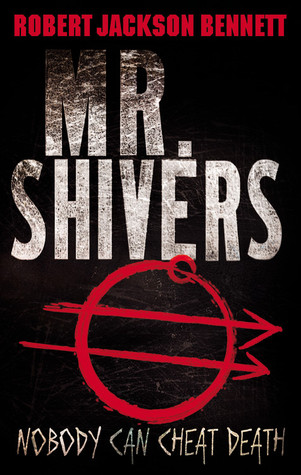I resolved to read everything Robert Jackson Bennett has written after reading American Elsewhere. Because I am somewhat obsessive about these things, I decided to read his books in order of publication, so last year I started out with Mr. Shivers, a book I’d maybe not have picked up elsewise because it’s billed more as horror than fantasy.
But then, what do I discover? It’s set during the Great Depression. Dear reader: I’ll read almost anything set during the Great Depression, particularly if it also touches on the Prohibition—an endlessly fascinating period in US history.
What’s fascinating to me is that Bennett has managed to infuse the familiar landscape of the 1930s Dust Bowl with a timeless quality. It’s at the same time recognizable and, somehow, more portentous; the setting is integral and specific to the story, but it also casts shadows that reach farther than just the Dirty Thirties. “They lived in a dead and dying age,” reads Chapter Twenty-Four, and, as it turns out, that could be any dead and dying age, not just this specific one. The dust and haze are everywhere, the clothes are grey and nondescript, the towns could be any town.
The characters take a while to resolve into fully fleshed-out figures out, too. That dust really gets everywhere, doesn’t it? Our main character is Connely, an everyman who has been drifting since something as yet undefined happened to his young daughter. He’s out for revenge, looking for the empty-souled monster man who broke his life: the scarred man, the bogey man. Mr. Shivers, some people call him.
Connelly meets others who are also on the hunt. They become part of the army of the displaced, unemployed hobos who jump train cars and camp out on the edges of towns. They’re a reticent bunch, closed up and reclusive. “You two are terrible conversationalists,” one of them tells the others, and it’s true: it takes a good long while to get a handle on who these people are, which may be the only real weakness this novel has.
They’re thrown together by fate and need, much more than desire. They’re in Big Sky country, and even if the horizon is frequently closer than it should be due to the dust storms, you can initially almost feel the weight of the environment and the mission pressing them right off the stage. Still, as the story progresses, they each acquire their own back story, their own motivation, and depth.
If the setting’s what pulled me into the novel, Robert Jackson Bennett’s spectacular prose is what sold me:
They took up upon an old county road. As they walked they kicked up a cloud of dust that rose to their faces, turning their soot-gray clothes to raw red. The land on either side was patched like a stray’s coat, the hills dotted with corn lying flat as though it had been laid low by some blast. Roots lay half submerged in the loose soil, fine curling tendrils grasping at nothing. In some places growth still clung to the earth and men grouped around these spots to pump life into their crop. As Connelly passed they looked up with frightened, brittle eyes and he knew it would not last.
Really, read that again. Each sentence works perfectly, each image is meaningful. It’s one of the most concise and poetic summations of life in the Dust Bowl I’ve ever read. This was on page 3 in my paperback edition. How can you not keep reading after something like that?
The story is a journey in a sense more than one, a chaotic road trip (though mostly taken by foot) that leads its characters not just to a new destination but also to a new awareness. The hobo signs shown at the start of each chapter (and on the paperback edition’s cover) take on an ancient, ritualistic, runic feel. As Connelly says, later in the novel:
With each step he had taken he had moved away from torpid slumber, from the complacent dream-world of home, and instead had approached the visceral savagery whose wax and wane formed the heartbeat of creation.
Again, a sentence that works on several levels, as it becomes clear that Mr. Shivers is maybe not your average psychopath. I can’t be the only one who immediately thought “Shiva” when seeing that name on the cover, right? Turns out that that timeless quality of the landscape I mentioned earlier wasn’t entirely coincidental. It’s happened before. It will happen again.
Casual hints are strewn through the story, maybe none more meaningful than a throwaway reference to the title character as the “Mithras-man” at the end of Chapter Eighteen. If this leads you to a few hours of hazy research, like it did with me, some details towards the end of the story may have more resonance, but it’s really not necessary to appreciate this novel.
So. Mr. Shivers is a dark, gripping tale full of beautiful prose and genuine, effective creepiness. It’s a period piece that transcends its period. It has the timeless quality of the “carnival in hell” atmosphere of certain Tom Waits songs. It amplifies the idea of the Great Depression to a surprising degree, lending it a much fiercer impact than the average American Gothic novel. The characters are a bit apersonal early on, which may turn some readers off, but for me the atmosphere of the setting was more than enough to carry me through. This is an excellent debut novel—a smaller scale story than American Elsewhere (in some ways, at least), but great nonetheless.
Mr Shivers is published by Orbit.
Stefan Raets reads and reviews science fiction and fantasy whenever he isn’t distracted by less important things like eating and sleeping. You can find him on Twitter, and his website is Far Beyond Reality.










